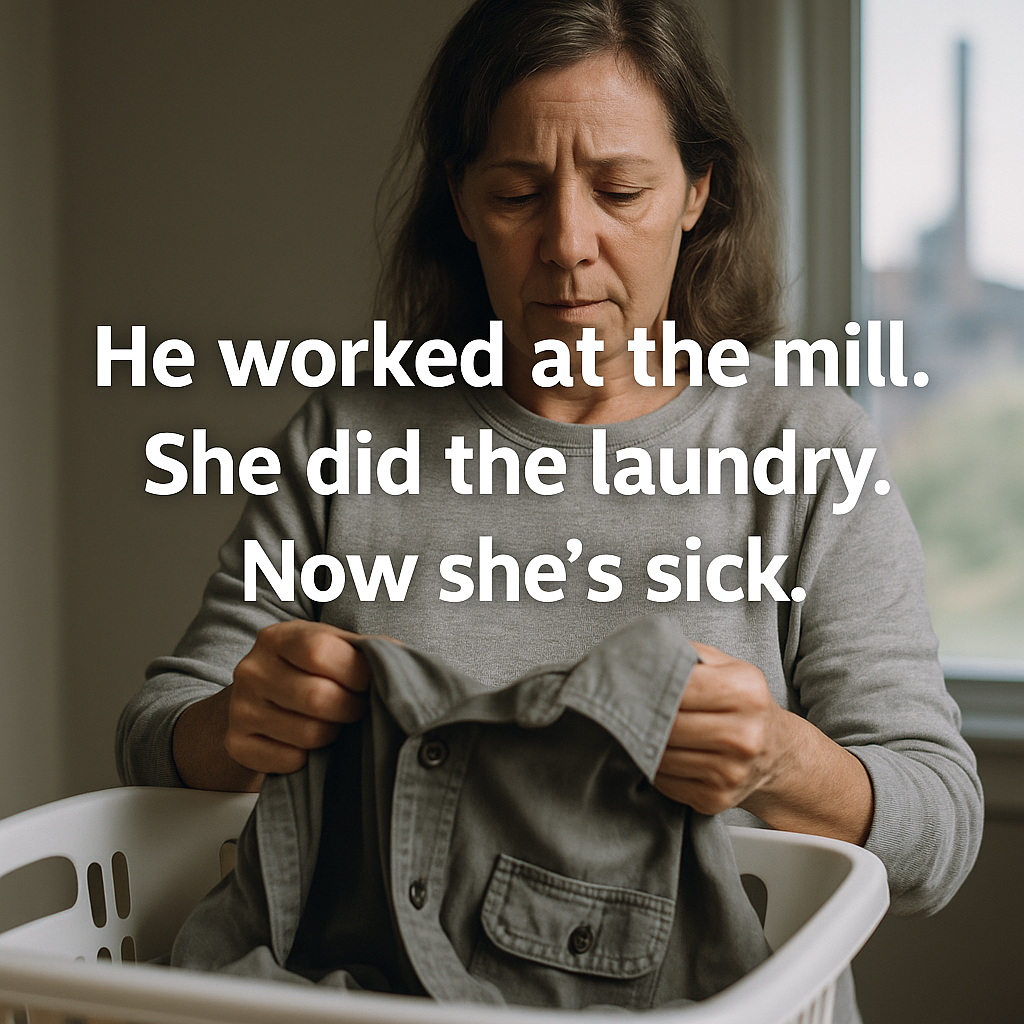Asbestos from mill work clothes is called secondary asbestos exposure, also known as take-home exposure. And for thousands of families across West Virginia and Pennsylvania, it’s the reason mothers, wives, and daughters developed mesothelioma or asbestos-related lung disease—decades later.
For decades, steelworkers across the Ohio Valley walked through asbestos every day—at mills in Weirton, Clairton, and Wheeling. It was part of the insulation. It coated the pipe wrapping. It filled the air in boiler rooms and machine shops.
And when the shift ended, it came home.
Asbestos fibers clung to jackets, overalls, and lunch pails.
They settled into car seats, onto couches, and into laundry baskets.
They ended up in the lungs of people who never stepped foot inside the mill.
⚠️ Why It Still Matters
Steel companies and product manufacturers knew about the dangers of asbestos and asbestos from mill work clothes.
They had safety data sheets, internal memos, and industry warnings.
But they never told workers to isolate their clothing.
They never warned families.
Now, those same families are paying the price.
⚖️ You Still Have Legal Options if exposed to asbestos from mill work clothes
If someone in your family worked at one of the following sites:
- Weirton Steel
- Wheeling-Pitt
- PPG Natrium
- U.S. Steel Clairton
- Duquesne Light
- Or any heavy industrial plant in the region…
…and a spouse or household member was later diagnosed with mesothelioma or lung cancer, you may have a valid take-home asbestos claim.
West Virginia and Pennsylvania law both recognize these cases.
And the time limit usually starts at the time of diagnosis—not exposure.
📞 Call (412) 781-0525 or
He worked at the mill.
She did the laundry.
And now she’s the one who’s sick.

